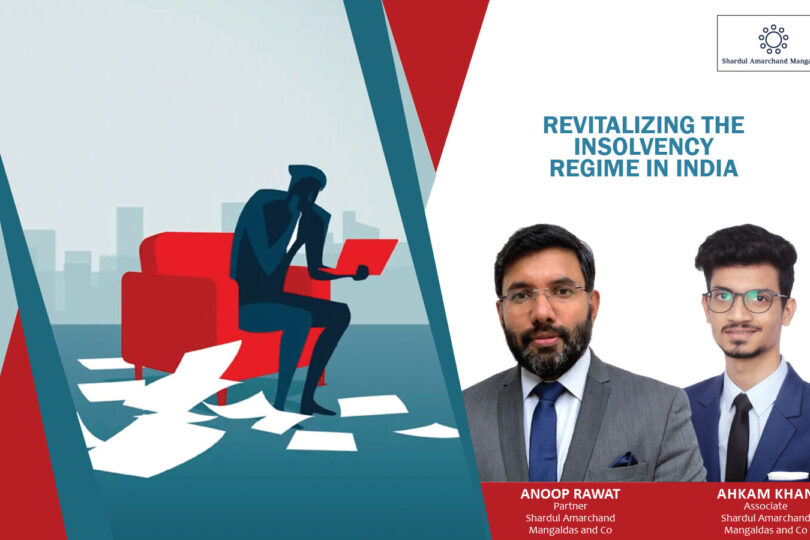
REVITALIZING THE INSOLVENCY REGIME IN INDIA
Despite shrinking recoveries and higher rate of liquidation during the latter phase of its quinquennial, even the strongest critics of IBC would yield to its efficacy when contrasted against the erstwhile legal regimes
The enactment of the Insolvency and Bankruptcy Code, 2016 (IBC) has been a watershed moment in the Indian debt recovery landscape. Despite shrinking recoveries and higher rate of liquidation during the latter phase of its quinquennial, even the strongest critics of IBC would yield to its efficacy when contrasted against the erstwhile legal regimes. At this critical juncture in its journey, however, the revelation is over and what remains to be seen now is the performance of this landmark legislation in these testing waters. This has not only made the appreciation of its critiques necessary but also calls for the need to plug gaps in the insolvency regime based on such critiques. While some of these may require legislative fixes, most implementation gaps require a hands-on practical approach to re-invigorate the IBC towards the achievement of the lofty goals set out in its preamble.
Burdened Adjudicating Authorities
The foremost objective of the IBC was the resolution of the insolvent entities in a time-bound manner. All typically mature insolvency jurisdictions aim to reduce the restructuring time to a minimum, to avoid the erosion of value within the distressed entities. However, India has been facing constant flak in this department, mostly due to the judicial delays. These delays can be attributed to a lower number of active benches or the huge number of judicial vacancies as well as the often sub-par quality of judgments rendered at the first instance level.
These judicial impediments both delay the admission of distressed entities into insolvency as well as prolong their restructuring process under the IBC. The former endangers the preservation of assets through fraudulent alienation pre-insolvency whereas the latter erodes the residual asset value in the corporate debtor, which is detrimental for all the stakeholders in the insolvency process.
The strengthening of the framework for adjudicating authorities under IBC is therefore, the need of the hour. This can be ensured inter alia through greater number of active benches, swifter filling of vacancies, directory timelines for adjudication, restricted acceptance of requests for adjournment, complete digitization of default and other records of the corporate debtors, and judicial training against ex-facie contra-statutory exercise of discretionary or equitable jurisdiction. Further, a mechanism for strict action against frivolous or abusive delay-causing litigation could foster greater stakeholder discipline in insolvency processes, which takes us to the next point.
Stakeholder Regulation
Throughout the implementation period of the IBC, a noticeable flaw has been the procedural impropriety exhibited by different stakeholders. The meddling of ousted promoters in the affairs of the corporate debtors, the acceptance/encouragement of disqualified or belated bids (albeit promising greater recovery) by the creditors, the abusive litigation by disgruntled losing bidders, or the failure of the resolution professional in ensuring transparency and confidentiality all have acted as a collective hindrance to the fulfillment of a successful and swift insolvency resolution. This has led to a greater need for regulation of stakeholders involved in the insolvency process.
The Insolvency and Bankruptcy Board of India (IBBI) has played a pivotal and pro-active role while donning its quasi-legislative hat through its insolvency regulations, however, there is still room for a greater presence in the consultative and monitoring spheres, to ensure the adequate fulfillment of its duties as the over-arching insolvency regulator.
Single-window clearance
The Supreme Court has framed the doctrine of ‘fresh slate’ under the IBC which postulates that the corporate debtor cannot be saddled with any pre-insolvency liability after completion of its insolvency resolution process (Essar Steel, Ghanashyam Mishra). Despite the aforesaid ruling having rendered moot the question of government or any other authority claiming such dues post-approval of the resolution plan, the government authorities continue to threaten the resolved corporate debtor, often revoking licenses, permits, or grants on account of unpaid pre-insolvency dues.
This issue needs both a legislative and administrative fix. The government should endeavor to build capacity through training and education of its departments, authorities, and officials on the operation of IBC vis-à-vis law administered by such authority, to avoid unnecessary claims and abusive litigations. Legislatively, the IBC could also provide a single window clearance mechanism, which allows continuance or renewal of government grants, permits, concessions (which often is an asset of great significance in complex and regulated sectors) by virtue of the order of the adjudicating authority approving the resolution plan.
Marketing and trading reforms for distressed assets
Despite the multi-billion dollar opportunities in the distressed assets space, India currently lacks a developed market for trading and investment in such assets. In this regard, a greater involvement of financial institutions and easing out of foreign investment norms in the distressed assets space may bring more investors into the country. The IBBI may also look to provide greater transparency and marketing by establishing a central platform for the marketing/advertising of investment opportunities in this space.
Another key issue is of price discovery due to absence of competition and information asymmetry in the distressed assets. A positive step has been taken through the introduction of NARCL, similar to that used by South Korea through the establishment of Korea Asset Management Corporation during the 1997 Asian Financial Crisis. The security receipts issued by NARCL (backed by the government) may be provided greater boost through relaxations in retail investment options and greater transferability through stock exchanges or similar trading platforms. This can lead to a bigger investment market for distressed assets and the transparency of returns in the long run can pave the way for greater competition in the market in view of the impetus provided by market-linked price discovery.
Introduction of legislative reforms
When the IBC was introduced, the legislature in its wisdom had decided to not provide for certain complex mechanisms within the insolvency framework. However, with subsequent developments through judicial precedents, India has settled several key issues in its insolvency regime and the time is ripe to take the next step in its jurisprudential journey. These steps may include enactment/notification of key provisions/frameworks in relation to personal insolvency, cross-border insolvency (Jet Airways), group insolvency (Videocon group), wider application of informal (or pre-pack) arrangements, thereby ensuring the much-needed guidance for stakeholders in the grey areas presently surrounding the IBC.
Disclaimer – The views expressed in this article are the personal views of the authors and are purely informative in nature.
